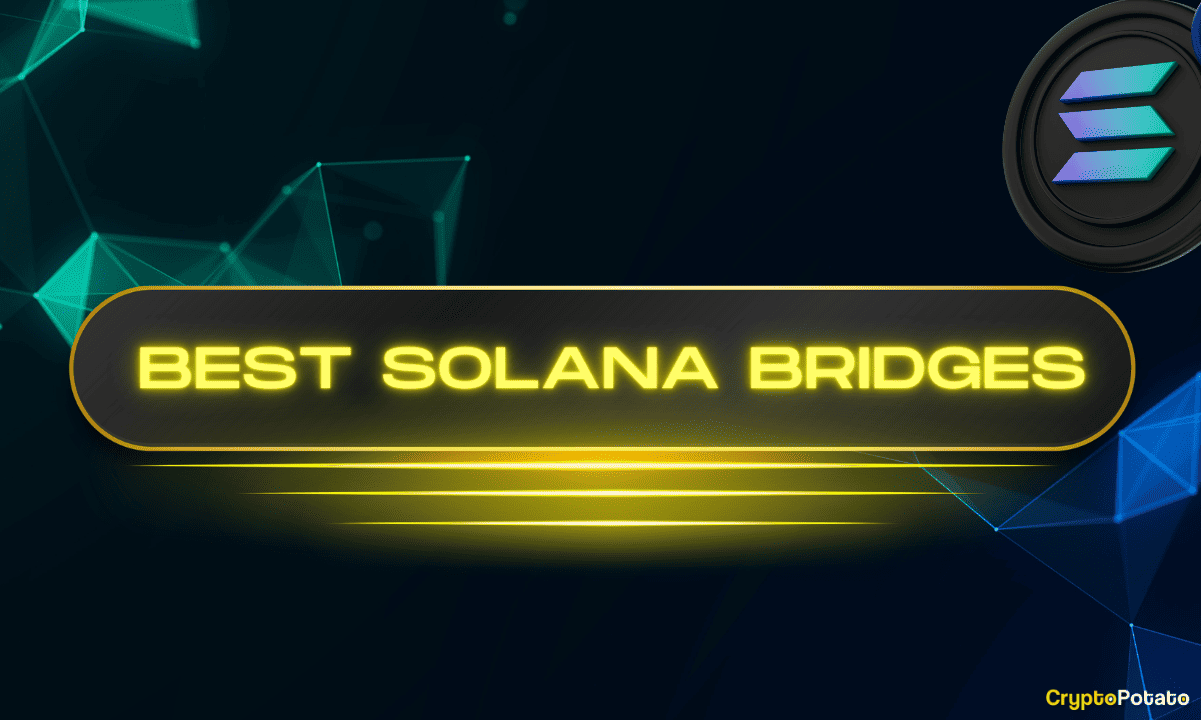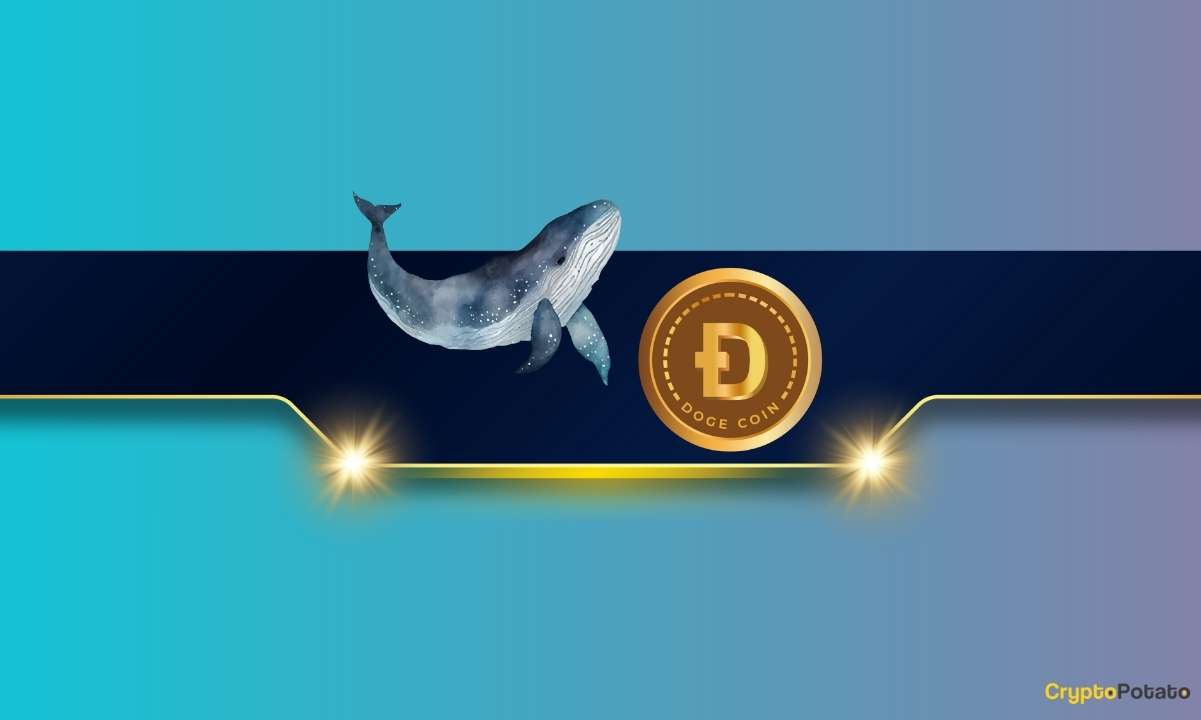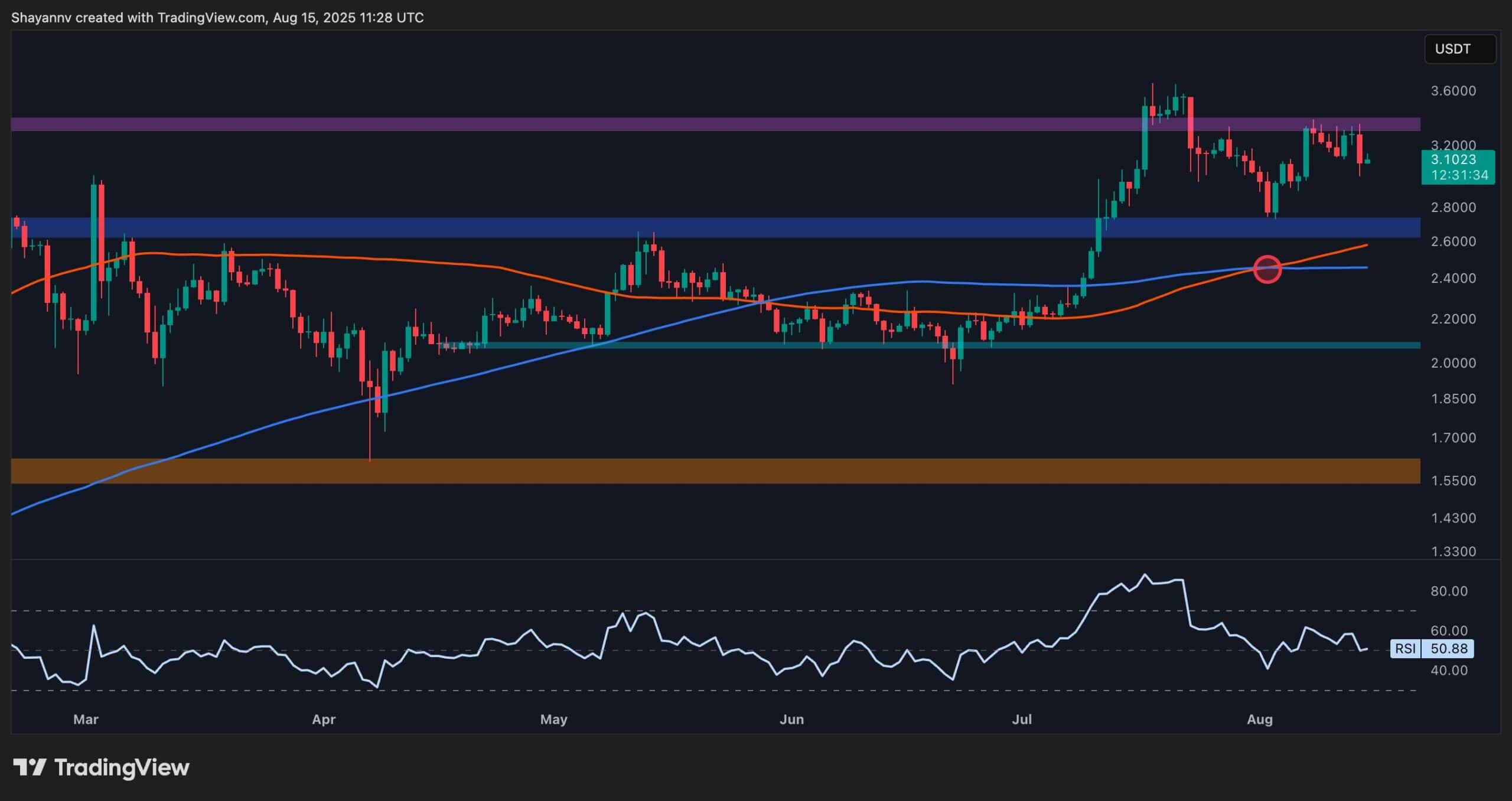Cryptocurrency
How to Bridge Crypto to Solana? Step by Step Guide to the Top Solana Bridges

There are many reasons why Solana is one of the most popular blockchain ecosystems in the industry.
With thousands of dApps, a high-performance architecture, and innovative mechanisms such as proof of history, it’s no wonder why millions of users use the blockchain for all kinds of DeFi activities.
It’s not just about Solana’s native users — as the network grows, more users from other blockchains migrate their coins to Solana. Luckily for them, many cross-chain bridges exist to transfer their crypto from different blockchains to Solana.
The question, then, is, what bridge should you use? And most importantly, what is the correct way of doing it? This guide will serve as a blueprint for you as we answer these and other crucial questions.
However, let’s first understand what a blockchain bridge is.
What is a Cross-Chain Bridge?
The term might be self-explanatory, but a cross-chain bridge allows you to transfer the native assets from Blockchain A to Blockchain B to perform multiple activities. Imagine you want to transfer ETH or any ERC-20 tokens to the Solana blockchain or vice versa.
So, a cross-chain bridge is a middleman that transfers your ETH to the Solana blockchain or your SOL to Avalanche. There are usually two ways in which cross-chain bridges work. One is through a process called wrapping.
Bridging With Wrapped Crypto
A bridge creates a wrapped version of your coin at a 1:1 value. For example, we can use BTC on Ethereum by using a bridge that locks your BTC and creates a wrapped version called wBTC that can be used on the Ethereum network. The most popular bridge protocol for Bitcoin is called Wrapped Bitcoin.
It’s like going to space: you must wrap yourself up in a space suit to survive in that environment. Once you’re on Earth, you can take it off and breathe fresh air. Even though it’s the same you, you are wrapped in something that expands your capabilities. Similarly, coins from one blockchain cannot operate in other networks due to their architectural differences.
Wrapping is done through a smart contract that stores and transfers the asset’s information and data.
It’s also popular among DeFi investors, allowing them to use their coins in protocols built on different networks. An example could be a lending protocol or liquidity provider rising in popularity, so investors bridge their coins and get a token that can work on such a protocol.
The main drawback of wrapped assets is that they depend on custodians, which can raise questions regarding security, centralization, and counterparty risk. Moreover, they can be slow, expensive, and complicated.
However, it’s worth noting that there are wrappers based on smart contracts that do not rely on a third-party custodian but rather store the assets on-chain. With that, nonetheless, there’s a risk of protocol failure.
Bridging With Liquidity Pools
Other bridges have a different approach to swapping currencies. If a bridge leverages liquidity pools, it is because they incorporate staking and farming programs that prompt users to lock their assets into these pools to earn yield. The bridge then uses the assets to fulfill bridging requests.
Cross-Chain Bridge and Synapse Protocol are popular solutions. Here’s a summary of how they work:
- Bob wants to convert their Solana USDT to an ERC-20 version.
- Cross Chain Bridge receives Bob’s Solana-based USDT and taps into its liquidity pool of ERC-20 USDT.
- The bridge then sends Bob the equivalent amount in ERC-20 USDT, charging a small fee.
- Bob can always swap back his Ethereum-based USDT for his Solana-based version.
These bridges share similar drawbacks to wrapped assets — mainly security and centralization. But their main drawback is that these pools can be emptied anytime. That means you’d have to wait several minutes, hours — and even days — for someone to fill that pool with the pertinent assets.
Blockchain bridges can be categorized into two main types: Trusted (Centralized) Bridges and Trustless (Decentralized) Bridges. Trusted bridges rely on intermediaries — with the main drawback being centralization concerns. On the other hand, trustless bridges operate without
intermediaries, using smart contracts and decentralized mechanisms to enable asset transfers.
Despite aiming to be as trustless as possible, these bridges may still face security vulnerabilities, such as hacking, phishing, smart contract vulnerabilities, and liquidity issues. Therefore, users should always do their own research and use reputable solutions.
How to Bridge Crypto To Solana
There is a variety of cross-chain bridges for Solana, but in this example, we’ll use deBridge and Synapse.
We’ll use both for this example so you can see how they work. At the end of the article, you’ll see a list of the best Solana bridges so you can judge for yourself.
Step 1: Choose Your Bridge
For this example, we’ll use DeBridge, which uses a swap mechanism to bridge crypto, and Synapse, a popular cross-chain communications network.
Step 1: Head over to deBridge and choose Bridge; it’ll take you to the WeSwap.
Step 2: Connect your MetaMask wallet to the deSwap app.
Step 3: Choose which blockchain you want to bridge your assets from. In this case, we want to transfer from Ethereum (the source chain) to Solana (the destination chain).
Step 4: As seen above, the app will show you the source and recipient network, and what tokens you wish to exchange, and their respective equivalents. Choose ETH for Ethereum and SOL for Solana.
Step 5: To the left, you can see a switch that allows you to transfer your funds after they’re swapped. This comes in handy if you want to transfer your new tokens to an address automatically. You just have to enter your Solana wallet address.
Step 6: Click on Create Trade and wait for the checkout window. There, you’ll see the transaction’s gas price, the execution fee, and other important details. You can also change your slippage tolerance.
Step 7: Confirm the trade and wait for confirmation.
Step 8: Your MetaMask wallet will pop up, asking if you want to confirm this particular transaction.
Step 9: At the bottom right, you’ll notice a transaction pending/confirmation window. Click on Check Transaction Progress in the deBridge explorer to see more information about the transaction — e.g if it still is waiting for confirmation.
Once the transaction has been executed, your new funds will appear in your Phantom wallet.
Cross-Chain Swap on Solana Wallets
An alternative way to bridging assets is to do it within a Solana wallet.
There are Solana wallets that come with cross-chain swap functionalities through trusted third parties. One of those wallets is Phantom, which allows you to swap assets across different blockchains directly on its interface.
By the way, we also have a detailed guide on the top Solana wallets. Take a look:
On the Phantom app, click on the swap tab and choose the origination chain, the token (displayed at the top), and the coin you wish to swap your SOL for.
Double-check your quantities and confirm the origination and destination blockchains, then click on Review Order. This screen will show you the transaction details, including the estimated time, provider (the bridge), fees, and the best route for the trade (best price). If everything is correct, click on Swap.
Popular Solana Bridges
Popular bridges to Solana include Portal (previously Wormhole), Allbridge, Mayan Finance, and more. Each protocol has its own set of supported coins and blockchain networks and might employ different approaches to bridging assets, so make sure you review the guidelines provided by the bridge you choose to use.
Portal Bridge
Portal Bridge is a decentralized application built on top of Wormhole protocol and supports a wide range of blockchains, including L1 and L2 chains such as Ethereum, Arbitrum, BNB Chain, Solana, Polygon, and other 20 blockchains.
It also offers an NFT bridge — a rare feature — that supports transfers of NFTs based on the ERC-721 and SPL standards
Portal is backed by at least 19 reputable institutional stakeholder service providers called Guardians (which are network nodes).
Portal Fees
- The fees will depend on the blockchain you choose but usually range from 0.03% to 0.04%, with a maximum fee of $1,000 USDC. The Guardians also take $0.0001 per transaction.
Advantages and Disadvantages
Pros of Portal
- Portal is one of the largest applications on top of Wormhole, providing high-speed swaps and transactions across multiple blockchains, including popular L1 and L2 networks, providing users with a varied list to choose from.
- Another feature to highlight is the low transaction fees charged by Guardians, besides the flat fee of 0.04%, capped at a maximum fee of 1,000 USDC.
Cons of Portal
- Security concerns: Wormhole was hacked for around $300M in February 2022, raising concerns about its long-term viability and its components like the Portal Bridge (since the latter is a cross-chain communication network). Despite being one of the largest cross-chain ecosystems, this is a stain in the protocol’s history.
- Another concern is the reliance on Guardians and their efficiency in defending the protocol against major attacks like the ones explained above.
Allbridge
Allbridge is a popular cross-chain solution for Solana. It facilitates cross-chain swaps across 22 blockchains, including Ethereum, TRON, NEAR, Tezos, Avalanche, and more.
Allbridge provides two core products:
- Allbridge Classic is a bridge between EVM and non-EVM compatible blockchains. It also adds certain features like staking.
- Allbridge Core: built specifically for cross-chain stablecoin swaps. It works without wrapping tokens and instead uses liquidity pools for tokens on each blockchain
The main difference between the two is that Allbridge Core is made for stablecoin swaps and provides access to TRON USDT (whereas Allbridge Classic doesn’t). Meanwhile, Allbridge Classic is more versatile since it provides features like staking and native token transfers and integrates the mint and burn mechanism, allowing users to transfer millions of dollars at any given time.
Allbridge Fees:
- Bridge fees will depend on the blockchains you’re interacting with (blockchain gas fees are separate).
- The protocol charges 0.3% for Solana transactions and 1% for Ethereum transactions.
Advantages and Disadvantages
Pros of Allbridge
- It is extremely user-friendly, and the bridging process is quite straightforward.
- It provides several blockchains to choose from as well as different features and options depending on the user’s need.
- Flexible transfer fees.
Cons of Allbridge
- Security: while Allbridge has taken major steps to improve its security, it was hacked in early 2023, and half a million were stolen. This raised concerns about the protocol’s security measures and long-term viability.
Synapse Protocol
Arguably the most user-friendly protocol in the list, Synapse Protocol uses liquidity pools for its bridging services, providing near-instant liquidity for token trades.
Synapse allows you to transfer and swap a myriad of assets across 15 EVM and non-EVM blockchain networks, including Ethereum, Arbitrum, BSC, and Avalanche.
Interestingly, Synapse provides the two bridging services we talked about in the Bridge explanation of this article. It uses a “Canonical Token Bridging” service, which involves wrapping assets, and “Liquidity-based Bridging,” which allows you to bridge native assets through cross-chain stableswap pools.
While Synapse does have its bridge, it can also find routes across different bridges to provide you with the best prices for your trade. To use it with Solana and Ethereum directly, head over to the Solana Bridge section.
Synapse Protocol Fees
Synapse’s fee structure is not so different from other protocols. While Synapse provides efficient and high-speed trades, there are several fees involved in our transactions since multiple components are behind it, and they are:
- The Synapse Bridge fee for facilitating the token swap
- Liquidity provider’s fees
- Origination and destination networks fee
- Slippage and arbitrage fees may apply
Anyhow, you’ll end up paying around $3 or $4 (subject to multiple factors) in fees to perform your trade, but it highly depends on the amount you want to swap.
Advantages and Disadvantages
Pros
- Uses an efficient farming and bridging mechanism to source liquidity from multiple sources, minimizing slippage.
- Leverages Layer-2 scaling solutions to perform cross-chain transactions more efficiently
- Enables cross-chain staking and provides opportunities for yield farming.
- Features an integrated decentralized exchange (DEX) and functions as a launchpad platform.
Cons of Synapse
- Limited amount of supported networks
- Fees can be higher than other protocols.
Now that you know how to bridge assets to Solana entirely on-chain, you are ready to go and hunt some of the upcoming airdrops:
Guide to Airdrops on Solana: The Most Popular Protocols Without a Token
Binance Free $100 (Exclusive): Use this link to register and receive $100 free and 10% off fees on Binance Futures first month (terms).
Cryptocurrency
Ethereum Foundation, Whales, and Hackers: What’s Driving the ETH Sell-Off?

TL;DR
- Whales, hackers, and the Ethereum Foundation wallets moved over $500M in ETH through large sales and withdrawals.
- Ethereum transfers rose to 4.6M ETH, nearing the monthly high of 5.2M recorded in July.
- Staking inflows hit 247,900 ETH, the highest in a month, locking more supply from trading.
Large Withdrawals and Whale Activity
Ethereum (ETH) has seen heavy movement from major wallets over the past few days. On-chain data from Lookonchain shows a newly created wallet pulled 17,591 ETH, worth $81.62 million, from Kraken in just two hours.
Over three days, two new wallets withdrew a combined 71,025 ETH, valued at $330 million, from the exchange.
One of these wallets, address 0x2A92, has withdrawn 53,434 ETH, worth $242.34 million, in two days. This includes a recent purchase of 30,069 ETH, valued at $138.46 million, during a market drop.
Major ETH Holders Offload Millions Amid Price Rally
In contrast, several separate entities have been disposing of some ETH holdings. A wallet tied to a hacker address 0x17E0 sold 4,958 ETH for $22.13 million at $4,463, securing a profit of $9.75 million. Earlier this year, the same address sold 12,282 ETH at $1,932 and later bought back part of the amount at higher prices.
A different whale sold 20,600 ETH for $96.55 million over the past two days, generating a profit of more than $26 million after holding the position for nine months.
Meanwhile, an Ethereum Foundation-linked wallet, 0xF39d, sold 6,194 ETH worth $28.36 million in the last three days at an average price of $4,578.
Recent sales from the same wallet included an additional 1,100 ETH and 1,695 ETH for over $12.7 million combined.
The #EthereumFoundation-linked wallet(0xF39d) sold another 1,300 $ETH($5.87M) at $4,518 ~11 hours ago.
Over the past 3 days, this wallet has sold a total of 6,194 $ETH($28.36M) at an average price of $4,578.https://t.co/4hfCWymHVG pic.twitter.com/ErUyEY8SJy
— Lookonchain (@lookonchain) August 15, 2025
Network Activity on the Rise
CryptoQuant data shows Ethereum’s total tokens transferred have been climbing since August 9. After ranging between 1 million and 3 million ETH through late July and early August, transfers have risen to 4.6 million ETH, approaching the monthly high of 5.2 million recorded in mid-July. This increase has occurred alongside a price rally from about $3,400 to $4,600.
Interestingly, staking inflows generally stayed between 20,000 and 80,000 ETH per day over the past month. On August 14, inflows jumped to 247,900 ETH, the highest in the period.
At the time, ETH was trading near $4,600. Large staking deposits reduce the amount of ETH available for immediate trading, as staked coins are locked for a set period.
In the meantime, ETH trades at $4,647 with a 24-hour volume of $68.25 billion, down 2% on the day but up 19% over the week.
Binance Free $600 (CryptoPotato Exclusive): Use this link to register a new account and receive $600 exclusive welcome offer on Binance (full details).
LIMITED OFFER for CryptoPotato readers at Bybit: Use this link to register and open a $500 FREE position on any coin!
Cryptocurrency
Massive DOGE Whale Activity Hints at $1 Breakout

TL;DR
- Whales bought two billion DOGE this week, lifting their combined holdings to 27.6 billion coins.
- A single 900M DOGE transfer worth $208M to Binance drew attention to large exchange movements.
- DOGE broke key resistance, with momentum building for a possible push toward the $1 price mark.
Price and Market Moves
Dogecoin (DOGE) traded at $0.23 at press time, slipping 4% over the past day but still showing a 2% gain for the week. Daily turnover came in at about $6.18 billion.
Meanwhile, the broader crypto market saw over $1 billion in liquidations. Hotter-than-expected US Producer Price Index data pushed traders to scale back expectations of a near-term Federal Reserve rate cut. DOGE had roughly 290,500 coins liquidated during the sell-off.
On the two-week chart, analyst Trader Tardigrade notes that DOGE has cleared a downward-sloping resistance line after completing what appears to be a “wave V” in an Elliott Wave sequence. Similar setups in the past, where prolonged declines stayed within falling channels before breaking higher, have been followed by sharp rallies.
$Doge/2-week#Dogecoin is gaining strong momentum to surge above $1 pic.twitter.com/TuSEKr19nv
— Trader Tardigrade (@TATrader_Alan) August 15, 2025
Momentum gauges are also turning up. The Stochastic RSI, which had dropped into oversold territory, is now heading higher. Previous reversals from this zone have coincided with sustained upward moves. The current formation points to a possible run that could carry DOGE past the $1 mark.
Heavy Whale Buying and Large Transfers
As reported by CryptoPotato, blockchain data shows large investors have added two billion DOGE in the past week, spending just under $500 million. That brings their holdings to about 27.6 billion coins, or 18% of the supply. The buying streak has prompted speculation within the community.
Recently, Whale Alert flagged a 900 million DOGE transfer worth about $208 million into Binance. The tracking indicates that it originated from a wallet connected to the exchange, likely as an internal activity. The address involved holds 2.88 billion DOGE, one of the largest balances on the network.
Ali Martinez also reports that transactions above $1 million reached a one-month high, with activity building since early August and peaking as DOGE traded at $0.25.
Whales are back! Dogecoin $DOGE activity at a 1-month high. pic.twitter.com/C83Pv68mCt
— Ali (@ali_charts) August 14, 2025
Sentiment Building
Analyst Gordon described the current setup as “a nice bit of consolidation” before a potential breakout, adding,
“This will be one of the first coins normies FLOCK to & the pump will be MASSIVE.”
With whale accumulation rising, high-value transfers increasing, and a bullish technical pattern in play, DOGE is positioned for a potential push toward $1 if momentum holds.
Binance Free $600 (CryptoPotato Exclusive): Use this link to register a new account and receive $600 exclusive welcome offer on Binance (full details).
LIMITED OFFER for CryptoPotato readers at Bybit: Use this link to register and open a $500 FREE position on any coin!
Cryptocurrency
Ripple Price Analysis: XRP at Risk as Key Support Levels Could Trigger Sharp Drop

XRP has recently entered a consolidation phase after a strong rally earlier this summer, with the price action now hovering around key resistance levels on both its USDT and BTC pairs. Yet, while momentum has slowed, the charts still indicate a generally bullish structure, with multiple key support levels remaining firmly in place.
Technical Analysis
By ShayanMarkets
The USDT Pair
On the XRP/USDT daily chart, the price is currently trading near the $3.10 mark, facing a strong resistance zone around $3.40. This follows a breakout above the $2.70 range in July, which has now flipped into a support area.
Both the 100-day and 200-day moving averages are also trending upward and recently formed a bullish crossover around $2.45, reinforcing the medium-term bullish sentiment. If the $3.40 resistance breaks, a push toward the critical $4.00 range becomes likely.
However, the RSI hovering near the neutral 50 level suggests a lack of strong momentum for now, meaning a short-term pullback into the $2.80 support zone is still possible.
This zone will be key for maintaining the bullish structure. Losing it could open the door for a deeper correction toward the 200-day moving average located around the $2.40 mark. Yet, as long as the price stays above the moving averages, the broader trend remains bullish.
The BTC Pair
Looking at the XRP/BTC chart, the pair has recently pulled back after hitting the 3,000 SAT resistance, with the price currently around 2,600 SAT.
This follows a clean breakout above the long-term descending channel and a successful retest of its upper boundary, which coincided with the 200-day moving average and the 2,400 SAT support zone. This confluence remains a key bullish technical factor, as holding above it could attract renewed buying pressure.
That said, RSI levels around 48 show that momentum has cooled after the sharp July rally, meaning XRP may continue ranging between 2,400 SAT and 3,000 SAT in the near term. A decisive close above 3,000 SAT would likely open the path to the 3,400 SAT zone, while losing 2,400 SAT could shift the bias back toward 2,000 SAT support. For now, the structure still favors the bulls as long as higher lows remain intact.
Binance Free $600 (CryptoPotato Exclusive): Use this link to register a new account and receive $600 exclusive welcome offer on Binance (full details).
LIMITED OFFER for CryptoPotato readers at Bybit: Use this link to register and open a $500 FREE position on any coin!
Disclaimer: Information found on CryptoPotato is those of writers quoted. It does not represent the opinions of CryptoPotato on whether to buy, sell, or hold any investments. You are advised to conduct your own research before making any investment decisions. Use provided information at your own risk. See Disclaimer for more information.
Cryptocurrency charts by TradingView.

 Forex3 years ago
Forex3 years agoForex Today: the dollar is gaining strength amid gloomy sentiment at the start of the Fed’s week

 Forex3 years ago
Forex3 years agoUnbiased review of Pocket Option broker

 Forex3 years ago
Forex3 years agoDollar to pound sterling exchange rate today: Pound plummeted to its lowest since 1985

 Forex3 years ago
Forex3 years agoHow is the Australian dollar doing today?

 Cryptocurrency3 years ago
Cryptocurrency3 years agoWhat happened in the crypto market – current events today

 World3 years ago
World3 years agoWhy are modern video games an art form?

 Commodities3 years ago
Commodities3 years agoCopper continues to fall in price on expectations of lower demand in China

 Economy3 years ago
Economy3 years agoCrude oil tankers double in price due to EU anti-Russian sanctions





















